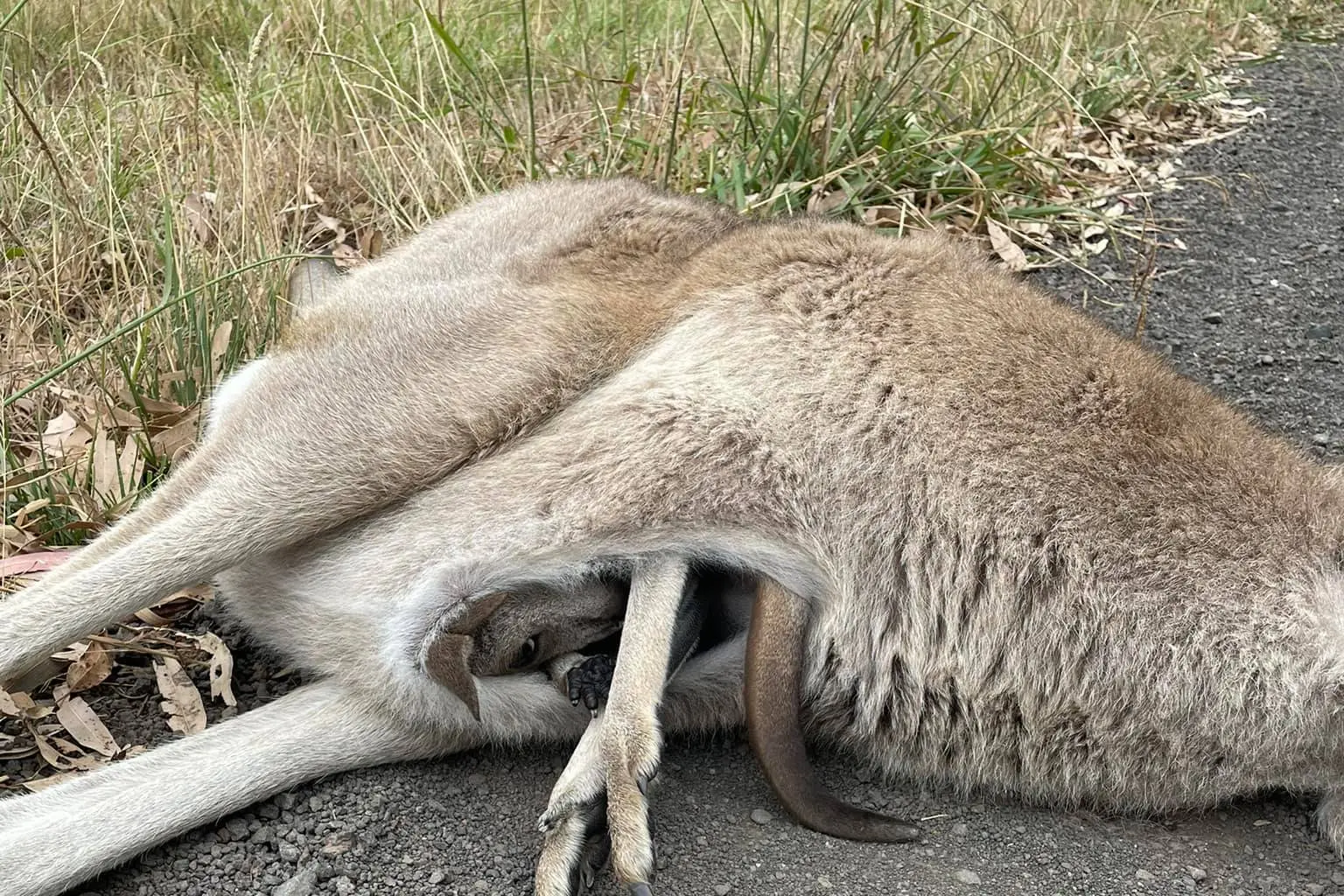PHOTO
54657.0
Local drivers are being reminded to take extra care on the roads, with wildlife experts warning of increased animal activity, particularly during drought conditions.
Local Wildcare president, Elena Guarracino, said that dawn and dusk remain the most dangerous times for wildlife crossings.
“Dawn and dusk are the times when most native animals are active and drivers should slow down at these times,” she said.
She added that it’s not only kangaroos and wombats drivers need to watch for.
“While most Australian wildlife is nocturnal and are grazing beside the roads and crossing the roads at dawn and dusk, they are also very active at night-time," Ms Guarracino said.
"However, birds, echidnas and turtles also forage beside roads and cross the road at any time of the day."
With dry conditions across the region, animals are being forced to graze closer to roads in search of fresh green pick.
“And this spells disaster for the animals and drivers,” she warned.
To prevent collisions, Ms Guarracino offers practical advice for motorists.
“Slow down, especially at dawn, dusk and at night-time," she said.
"Scan the roadsides for animals near the edge of the road.
"Ask passengers to keep a look out.
"Kangaroos and wombats are unpredictable and may hop or run onto the road rather than away from it.
"Birds often take off into the path of the car or just fly across the road. Slow down and even stop if safe to do so.”
If a collision occurs, safety should be the top priority with motorists urged to park well off the road, turn on hazard lights, wear a hi-vis vest if available, and only move the animal if it’s safe.
“If the animal is still alive, do not risk an injury to yourself if you are not confident to move it," Ms Guarracino said.
"Call Wildcare Queanbeyan or the police for assistance."
For deceased animals, it’s important to check for joeys but handle with care.
“Do not attempt to remove the joey from the pouch if not confident and never pull a joey out of the pouch by the tail or legs,” she said.
“Often the joey is still attached to the mother’s teat, and pulling it will cause serious injury.”
If an injured bird is found, she recommends using a towel or jumper to approach it carefully from behind before placing it in a secure box.
“Never place an animal in your car that is not contained,” Ms Guarracino said.
“Put the box in a safe place in the car and away from children or dogs.
"Turn the radio off.”
Turtles are particularly active after rain and are often seen crossing roads.
“If you see a turtle crossing, pick it up safely by the shell at the tail and head end, not the sides, and place it well off the road in the direction it was going,” she said.
However, drivers should never attempt to transport echidnas in their cars.
“Never put an echidna in your car," Ms Guarracino said.
"They will do a lot of damage and only very specialised transport carriers will hold them securely.
"They are escape artists and will bury themselves in places you would never imagine."
For any sick, injured or orphaned wildlife, residents are encouraged to call the Wildcare Helpline on 6299 1966 for advice and assistance.
“It is really helpful if you can wait near the animal to help the rescuer find it," Ms Guarracino said.
"Otherwise, provide clear location details, take a pin drop or tie something to a guide post or fence."
Hilltops is serviced by Wildcare Queanbeyan which covers approximately 22,000 square kilometres, spanning from near Quandialla through Wombat, Young, Harden, Jugiong, and Wee Jasper, south to Bredbo, west to Braidwood, and north to Taralga - almost reaching Cowra.
In 2023–24, the organisation rescued 3,096 animals, with Eastern Grey Kangaroos being the most commonly rescued species (1,162), followed closely by birds (1,188).
Wildcare is calling for more volunteers to help answer the Helpline, rescue, euthanase, and care for injured or orphaned animals.
Those interested can contact the Wildcare Helpline or visit the Wildcare website to complete the online membership form.





